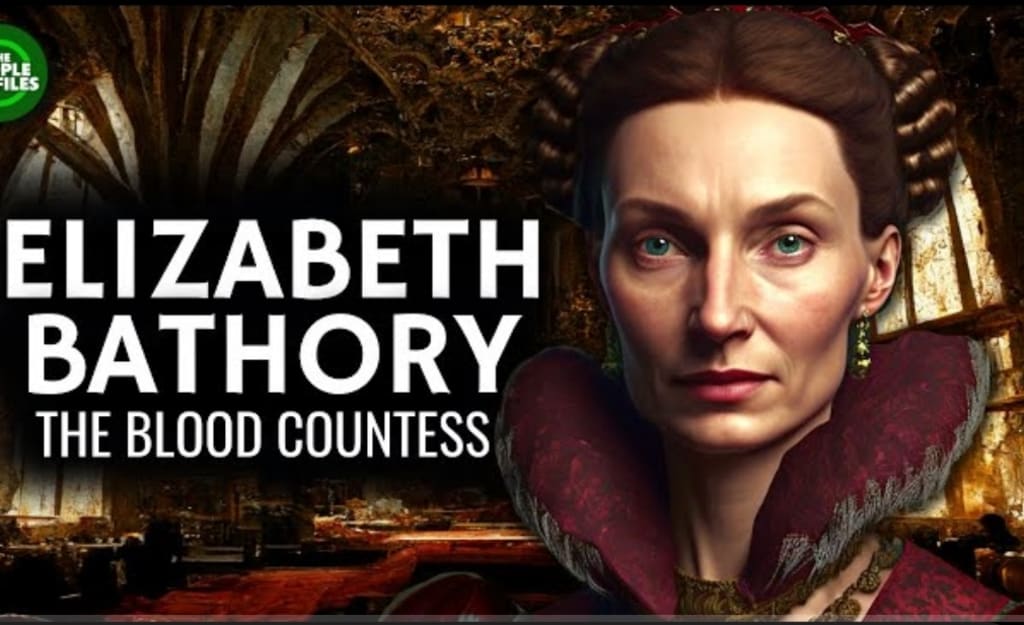The documentary Elizabeth Bathory: The Blood Countess Part 1.
The historical figure known as Countess Elizabeth Báthory de Ecsed, also known as The Blood Countess, was born on August 7, 1560, at her family's home in Nyrbátor. 146 miles east of Budapest in the Kingdom of Hungary.

Her father was a member of the Somlyo branch of the family, and her mother was Baroness Anna Báthory. was Baron George VI Bathory, who belonged to the same family's Esced branch, which meant that her parents were related by blood.
The family's history went back to 1310, and the literal translation of the family name
Ironically, Báthory's name means "good hero" given how Elizabeth has been regarded.
The phrase "good hero" was a reference to a family tradition about Vitus, a semi-mythical Bathory who slew a dragon that had been terrorizing the land.
in the year 900 and received the names Báthory and Ecsed Castle in return.
family estate that Baron George VI inherited but wasn't actually constructed until
the 1300s. Three exposed dragon teeth could be seen on the Báthory coat of arms, which had a blood red and white backdrop. as a nod to this family legend.
Childhood was spent by Elizabeth Bathory at Ecsed Castle, now called Nagyecsed, or Great Ecsed is a town in eastern Hungary's Northern Great Plains region not far from the country's current border with Romania. She was schooled and brought up as a Calvinist Protestant, as was fitting for
a young lady of aristocratic birth from a powerful family.
Latin, German, Hungarian, and Greek were among the languages she was fluent in. According to several sources, she also was sharp and independent.
She reportedly endured seizures throughout her youth and reported headaches,
epilepsy, a disorder that ran in the Báthory family, may have contributed.
Epilepsy was not understood at the time, even though Renaissance experts started looking at it.It was often believed that epilepsy was a symptom of a physical condition.
as a moral or occult ailment, or as a symptom of insanity, and so it was kept quiet.
Living during the Renaissance, a time when the Middle Ages and Modernity were converging,from historians Elizabeth's life was rife with inconsistencies.
As befitted a woman, she received a Renaissance-style education, but science
could not yet comprehend her health situation.
She had joined the comparatively young Protestant faith but encountered the enduring
the Great Power of the Holy Roman Empire and the Roman Catholic Church. region.
She was supposed to represent the delicate notion of femininity, but instead she was exposed to the blood of brutality, battle, and punishment in medieval times.
Elizabeth, a little girl and noblewoman, would have witnessed the application of the harsh punishments. out on domestic helpers and those from a lower social class.
From a modern perspective, it can be challenging to comprehend how violence was desensitized. On landed estates, whipping was a frequent method of punishment, and the majority of
Europe frequently meted out brutal punishments that were more severe than the crime's level of violence.For small-time thievery, suspicion of witchcraft, or unwomanly behavior, limbs may be amputated. were either drowned or burned alive, and treason - the gravest of all crimes - was punished. through horrifyingly ingenious torture techniques designed to kill and cause maximum pain.
Elizabeth was born only a few decades after the bloody suppression of a peasants' insurrection in 1514. György Dózsa, the organization's head,was repressed and made to wear a Watching his younger brother be chopped up while wearing a heated iron crown and enduring hot pliers
finally having his skin eaten by the other rebels who faced being forced into his skin
Before he ultimately passed away,he threatened them with a violent death if they objected. However,for less serious offenses, local authorities—often the landlord—determined the penalties.
Elizabeth and her family were both accountable for and exposed to the
the brutality of medieval penalties. In Hungary's 16th and 17th centuries, the Báthory family was highly strong and well-known.Poland,too.along with her Elizabeth's father's uncle and the baron and baroness.
About the Creator
Nora Ariana
There are no limits to our dreams, just believe they do mean something to us.
Enjoyed the story? Support the Creator.
Subscribe for free to receive all their stories in your feed. You could also pledge your support or give them a one-off tip, letting them know you appreciate their work.






Comments (2)
GREAT
Wow I think 🤔 this is the most interesting story ever 🤔